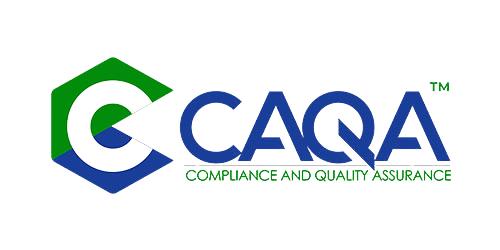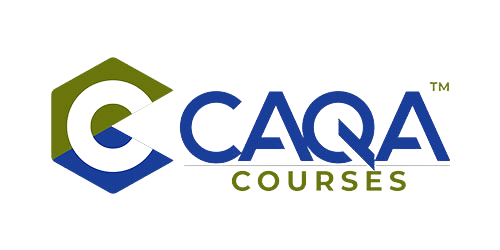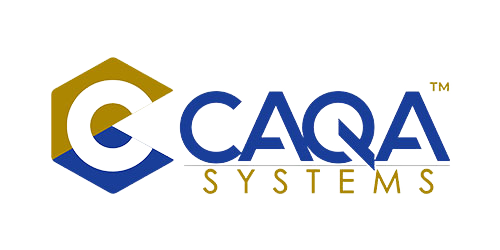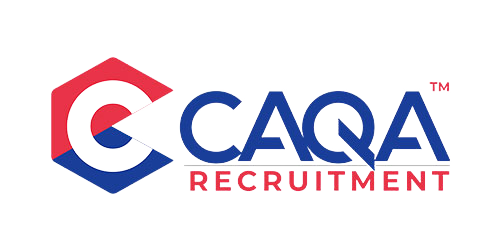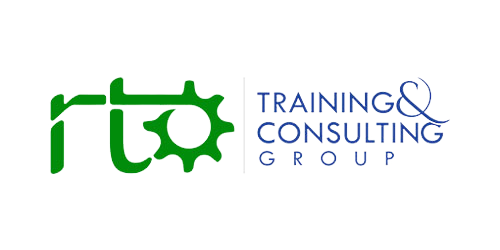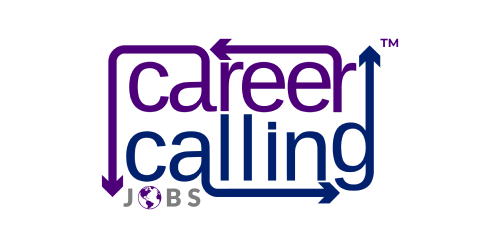The Pendulum Swings: From Centralisation to Industry Control
New Zealand's recent announcement of sweeping reforms to its vocational education system marks a significant reversal in policy direction that carries valuable lessons for Australia's own evolving training landscape. As RTOs prepare for the July 2025 standards implementation, understanding New Zealand's shift from centralised to industry-led approaches offers important context for Australia's ongoing navigation between national consistency and industry responsiveness. Auditors may evaluate how effectively providers are balancing these sometimes competing priorities while maintaining quality training aligned with both compliance requirements and workplace realities.
Beginning January 2026, New Zealand will introduce a new, independent, industry-led model for work-based learning, fundamentally reshaping how apprenticeships and traineeships operate across the Tasman. This significant pivot comes just a few years after the 2020 reforms that created Te Pūkenga, the mega-institution that merged 16 Institutes of Technology and Polytechnics with industry training organisations under one centralised structure. The rapid reversal of this consolidation approach represents a striking policy shift with important implications for vocational education governance globally.
At the heart of the reform lies industry dissatisfaction with the centralised Te Pūkenga model, which, according to Vocational Education Minister Penny Simmonds, has "become overly centralised", resulting in training that is "often disconnected from the realities of the jobs they are working towards." This concern about disconnection between institutional training and workplace requirements echoes similar debates occurring within Australia's VET sector, albeit within our different governance structure.
For vocational education providers, New Zealand's experience offers a cautionary tale about the challenges of balancing system-wide consistency with workplace relevance—a tension familiar to many Australian RTOs navigating between national training package requirements and specific industry needs. When developing training approaches under the 2025 standards, evidence of effective engagement with this balance may demonstrate particular provider sophistication in maintaining both compliance and workplace relevance.
New Zealand's Reform Direction
Understanding the specific mechanisms of New Zealand's reforms provides valuable context for considering various approaches to industry engagement within vocational education systems.
The Industry Skills Boards Model
Central to New Zealand's new direction is the establishment of Industry Skills Boards (ISBs), which will be given authority to set training standards, endorse programs, and moderate assessments. This model shifts significant control from the centralised Te Pūkenga structure back to industry-specific bodies with closer connections to workplace requirements and employer expectations.
These ISBs will initially play a transitional role, with apprentices and trainees currently enrolled with Te Pūkenga moving to ISB oversight for up to two years while the new system develops. During this period, ISBs will be permitted to enrol new learners directly, creating continuity while other providers establish capacity to deliver work-based learning under the new framework.
The longer-term vision appears to involve a more diverse provider landscape where "new work-based learning private providers, polytechnics, or Wānanga" will directly enrol students, presumably under standards and quality assurance mechanisms established by the relevant ISBs. This creates a hybrid system combining industry-led standard setting with diverse delivery partners—a model bearing some resemblance to elements of Australia's pre-Jobs and Skills Councils approach.
For Australian vocational education stakeholders, this ISB model may appear somewhat familiar, echoing aspects of our former Industry Skills Councils while introducing specific New Zealand adaptations. The emphasis on industry-led standards with implementation through diverse providers creates interesting comparisons with Australia's evolving approach to balancing industry input with system cohesion.
Implementation Timeline and Transition Management
New Zealand has established January 1, 2026, as the commencement date for the new system, creating an approximately 18-month preparation window for establishing the necessary governance structures, operational frameworks, and transition processes. This timeline acknowledges the complexity of such fundamental system change while providing a reasonable preparation opportunity for affected stakeholders.
The transition management approach appears focused on minimising disruption for current learners and employers, with Minister Simmonds emphasising continuity by assuring stakeholders, "if you're a learner or an employer, keep going. Your qualifications are essential, and your training is valuable. There will be no disruption; your training stays on track." This commitment recognises the critical importance of maintaining confidence in qualification validity throughout system transitions.
For Australian observers, this implementation approach offers an interesting comparison with our own experience of training system reforms, which have sometimes encountered challenges in maintaining stakeholder confidence during transition periods. The explicit focus on stability for current participants while building new structures represents good practice in managing complex system changes affecting thousands of learners and employers.
Comparative Context: New Zealand and Australia
Examining New Zealand's reforms within a comparative context helps illuminate both similarities and differences between the Tasman neighbours' approaches to vocational education governance.
Contrasting Reform Trajectories
New Zealand and Australia have followed notably different reform trajectories over recent years, despite sharing some similar challenges and objectives. While New Zealand initially pursued ambitious centralisation through the creation of Te Pūkenga, Australia has maintained greater structural separation between standard-setting bodies and delivery organisations, albeit with significant evolution in how industry engagement mechanisms operate.
Australia's recent establishment of Jobs and Skills Councils (JSCs) to replace Industry Reference Committees and Skills Service Organisations represents evolution rather than wholesale system redesign, maintaining the principle of industry input into standards while adjusting implementation mechanisms. This more incremental approach contrasts with New Zealand's more dramatic policy reversals between centralisation and industry control within relatively compressed timeframes.
For vocational education providers operating in both countries, these divergent approaches create interesting considerations regarding how similar objectives around industry relevance and system cohesion can be pursued through different governance models. When developing cross-Tasman operations, understanding these structural differences helps navigate distinct compliance and stakeholder engagement requirements.
Common Challenges and Shared Concerns
Despite different structural approaches, both countries face similar fundamental challenges in balancing competing priorities within vocational education:
Industry Relevance versus System Consistency: Both systems grapple with ensuring training reflects current workplace practices while maintaining sufficient consistency for qualification recognition and system navigation. New Zealand's ISB approach and Australia's JSC model represent different attempts to address this same fundamental tension.
Responsiveness versus Stability: The vocational sector in both countries must simultaneously demonstrate agility in addressing emerging skills needs while providing stability for learners and employers, making significant commitments based on qualification expectations. These competing imperatives create implementation challenges regardless of the governance model.
Public Investment and Market Dynamics: Both systems navigate complex interactions between public investment, employer contribution, and market competition in determining how training is funded and delivered. These dynamics influence system accessibility, quality, and sustainability regardless of specific governance arrangements.
For vocational education stakeholders, recognising these shared challenges helps identify transferable lessons despite structural differences. When evaluating reform impacts, focusing on how different approaches address these common tensions may prove more valuable than direct structure comparison alone.
Implications for Australia's VET Sector
New Zealand's pivot toward greater industry control carries several implications for Australia's vocational education sector worth considering as we continue implementing our own reforms.
Industry Leadership Balance
The pendulum swing in New Zealand from centralisation back toward industry control highlights the perpetual challenge of finding an appropriate balance in vocational system governance. While excessive centralisation risks disconnection from workplace realities, fragmented industry control without coordination mechanisms potentially creates inconsistency, duplication, and navigation challenges for learners and employers.
Australia's more evolutionary approach through the Jobs and Skills Councils model attempts to maintain industry leadership while preserving national consistency through coordinated frameworks. The efficacy of this approach compared to New Zealand's more dramatic restructuring remains to be demonstrated through implementation experience in both countries over the coming years.
For Australian vocational education providers, this balancing act suggests value in developing operational approaches that maintain flexibility for industry responsiveness while ensuring compatibility with national frameworks. When auditors evaluate training and assessment strategies under the 2025 standards, evidence of such balanced approaches may demonstrate particular provider sophistication in navigating this complex terrain.
Provider Diversity Considerations
New Zealand's reforms appear to contemplate greater provider diversity in work-based learning delivery, with private providers, polytechnics, and Wānanga all identified as potential delivery partners in the new system. This direction aligns with ongoing discussions within Australia regarding appropriate provider diversity in different training contexts, particularly for apprenticeships and traineeships.
The effectiveness of diverse provider models depends significantly on quality assurance mechanisms that maintain standards without imposing excessive compliance burdens, discouraging participation. Both countries continue grappling with how to balance market openness with quality protection in ways that serve learner and employer interests while preventing exploitation or under-delivery.
For Australian training providers, New Zealand's experience may offer valuable insights regarding how different quality assurance approaches impact provider diversity and program innovation in work-based learning contexts. When developing international benchmarking under the 2025 standards, examining such comparative experiences may provide valuable context for evaluating Australian approaches.
Transition Management Lessons
The emphasis on continuity for current learners and employers within New Zealand's reform implementation offers an important reminder of stakeholder impact considerations during system changes. Major vocational education reforms inevitably create uncertainty that can undermine confidence if not managed through clear communication and transition pathways.
Australia's more incremental reform approach potentially reduces some transition disruption risks through evolutionary rather than revolutionary change. However, even incremental changes require careful transition management, ensuring current participants maintain confidence in qualification value and completion pathways throughout implementation periods.
For Australian vocational education providers, New Zealand's transition approach reinforces the importance of clear communication with current students and employer partners when implementing new requirements or procedures resulting from the 2025 standards. When auditors evaluate change management under these standards, evidence of such stakeholder-focused transition planning may demonstrate particular provider maturity.
Monitoring Implementation Outcomes
As New Zealand implements its announced reforms, several specific aspects merit ongoing monitoring by Australian stakeholders to identify transferable lessons and comparative insights:
Industry Skills Boards Development
The establishment and operation of New Zealand's Industry Skills Boards will provide valuable case studies in industry-led governance that may inform Australian thinking about optimal industry engagement mechanisms. Particularly worth watching:
Representative Governance: How ISBs balance representation across industry segments, firm sizes, geographic regions, and other stakeholder categories to ensure appropriate diversity of perspective while maintaining operational effectiveness.
Standard Setting Processes: The mechanisms ISBs develop for incorporating technical expertise, employer feedback, and emerging trends into training standards while maintaining qualification integrity and cross-industry compatibility.
Quality Assurance Approaches: How ISBs implement assessment moderation responsibilities that maintain appropriate standards while respecting provider expertise and avoiding excessive compliance burden.
For Australian industry bodies and policy stakeholders, these implementation experiences may provide valuable reference points when considering the evolution of our own industry engagement mechanisms within the Jobs and Skills Councils framework.
Provider Response Patterns
The responses of different provider types to New Zealand's new framework will demonstrate how market dynamics operate within industry-led vocational systems. Important aspects to monitor include:
Market Entry Decisions: Which providers choose to enter work-based learning delivery under the new framework, and what factors appear to influence these decisions regarding program portfolio, industry focus, and geographic coverage?
Collaboration Approaches: How providers develop relationships with Industry Skills Boards, employer networks, and other stakeholders to ensure program relevance and sustainability within the new governance structures.
Innovation Emergence: Whether the new framework appears to stimulate or constrain provider innovation in program design, delivery methods, and assessment approaches compared with the previous centralised model.
For Australian training providers considering business model evolution, these market dynamics may provide valuable insights regarding potential opportunities and challenges in different governance environments.
Learner and Employer Experiences
Ultimately, reform success depends on improved experiences for learners and employers rather than governance elegance alone. Key indicators worth monitoring include:
Enrollment Patterns: Whether the new framework appears to influence overall participation rates, industry distribution, or demographic composition of apprenticeship and traineeship cohorts.
Completion Outcomes: How qualification completion rates, timeframes, and assessment results evolve under the new industry-led approach compared with previous centralised governance.
Employer Satisfaction: Whether measures of employer satisfaction with graduate capabilities, training relevance, and system navigation show improvement under the new framework.
For Australian vocational education stakeholders, these outcome measures may provide the most valuable comparative data regarding different approaches to balancing industry leadership with system cohesion.
Conclusion: Learning from the Tasman Laboratory
As vocational education approaches the watershed implementation of the 2025 standards in Australia, New Zealand's dramatic policy pivot offers a valuable opportunity for comparative learning without direct system disruption. By monitoring implementation experience across the Tasman, Australian stakeholders gain additional perspective on perennial questions regarding optimal governance arrangements for vocational education and training.
The contrasting reform trajectories—New Zealand's pendulum swing between centralisation and industry control versus Australia's more evolutionary approach through Jobs and Skills Councils—create natural experiment conditions for examining how different governance structures address common challenges around industry relevance, system navigation, and qualification integrity. This comparison enables a more nuanced evaluation of reform impacts than examining either system in isolation.
For vocational education providers navigating both compliance requirements and industry expectations, these international comparisons provide valuable context for developing approaches balancing these sometimes competing priorities. When responding to the 2025 standards implementation, evidence of such an internationally informed perspective may demonstrate particular provider sophistication in navigating the complex vocational education landscape.
Perhaps most fundamentally, New Zealand's experience reminds us that vocational system design inherently involves trade-offs between competing priorities rather than perfect solutions. The recognition that "there is no one right answer" but rather ongoing calibration between industry specificity and system coherence helps maintain a pragmatic perspective amid reform implementation. By learning from each other's experiences while respecting distinct national contexts, Australia and New Zealand can continue improving their vocational systems in ways that effectively serve learners, employers, and broader economic and social objectives.
This article presents analysis from independent consultants based on current policy developments. RTOs should consider their specific contexts when evaluating the implications of international developments for their operations.










